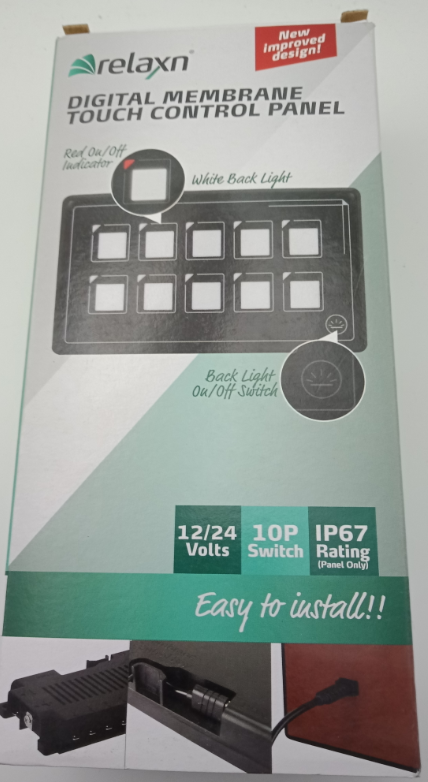Why Membrane Switches Are the Preferred Choice for Compact Devices
Comprehending Membrane Changes: The Key to Reputable and resilient Controls
Membrane switches over stand for an important aspect of contemporary user interface layout, blending functionality with durability in numerous applications. As we explore the details of membrane layer switches, it comes to be clear that their function in improving control systems is both extensive and complex, raising inquiries about exactly how finest to take advantage of their abilities in future advancements.
What Are Membrane Buttons?
Membrane layer switches are an innovative solution in the world of interface modern technology, incorporating functionality and layout seamlessly. These gadgets offer as an interface between individuals and electronic systems, integrating several components right into a portable style. Typically constructed from flexible, slim layers of products, membrane layer buttons are developed to react to touch, allowing individuals to connect with equipment and digital tools efficiently.
The primary elements of a membrane layer switch include a printed circuit layer, visuals overlay, and a spacer layer that stops unexpected activation. The graphic overlay can be customized to reflect brand identity or customer choices, boosting aesthetics while ensuring usability. Membrane buttons are generally used in numerous applications, consisting of clinical devices, customer electronics, and industrial devices, owing to their toughness and resistance to environmental elements such as wetness and dust.
One of the crucial benefits of membrane buttons is their ability to stand up to wear and tear, making them optimal for high-traffic settings. Furthermore, they are lightweight and require marginal room, permitting cutting-edge styles in item advancement. In general, membrane layer switches over stand for a practical and efficient option for contemporary electronic interfaces, weding innovation with user-centric design principles.

Just How Membrane Layer Changes Work
The procedure of membrane switches joints on a simple yet effective device that equates customer input into digital signals. When an individual presses the switch, the top layer warps, allowing a conductive aspect in the circuit layer to make contact with an equivalent conductive pad on the bottom of the visuals overlay.
The style of membrane layer switches can differ, however they often include domes or tactile components to provide comments to the user, enhancing the overall experience. The products used in membrane layer buttons, such as polyester or polycarbonate, contribute to their longevity and resistance to environmental factors, including moisture and dust. In addition, the printed circuits are usually encapsulated, which shields them from wear and tear over time.

Benefits of Membrane Buttons
Among the key advantages of membrane buttons is their convenience in design, permitting them to be personalized to fulfill specific customer needs and aesthetic demands. This adaptability expands to numerous sectors, where different forms, dimensions, and shades can be employed to improve customer communication and visual allure.
In addition, membrane layer switches are recognized for their sturdiness. Built from durable materials, they are immune to dirt, moisture, and physical wear, which significantly prolongs their life expectancy contrasted to conventional mechanical buttons. This longevity makes them specifically suitable for high-traffic atmospheres and applications requiring longevity.

In addition, membrane layer switches supply a structured profile, causing a thinner design that can be integrated into various gadgets without including bulk. This function not only improves the visual allure yet also adds to a much more ergonomic product layout.

Applications of Membrane Buttons
User-friendly and versatile, membrane layer buttons find applications throughout a wide variety of industries, including medical devices, consumer electronic devices, and commercial equipment. In the medical area, these buttons are integral to tools such as analysis tools, person monitoring systems, and infusion pumps, where dependability and ease of cleansing are crucial. Their visit the site capability to stand up to severe atmospheres and preserve performance makes them perfect helpful site for such applications.
In consumer electronics, membrane buttons are utilized in products like microwaves, washing devices, and remotes - membrane switch. Their sleek design enables intuitive customer interfaces, boosting the total customer experience while giving longevity and resistance to tear and put on
Commercial equipment additionally profits from membrane layer buttons, particularly in control panels for machinery and automation systems. These buttons use protection versus dirt and dampness, making sure constant performance in challenging environments. Their customizable features permit suppliers to tailor them to details functional needs, boosting performance and functionality.
Selecting the Right Membrane Change
When picking a membrane layer switch, it is vital to consider numerous elements that affect efficiency and suitability for certain applications. The primary considerations include ecological problems, tactile responses, longevity, and style requirements.
First, evaluate the operating atmosphere; switches revealed to moisture, chemicals, or extreme temperatures require certain products to ensure long life and performance. Next off, evaluate the requirement for responsive comments. Relying on user communication, some applications may gain from a responsive response to validate activation, while look at these guys others might favor a non-tactile design for aesthetic factors.
Toughness is an additional crucial aspect; membrane layer switches ought to be developed to stand up to regular use, effects, and abrasion. Make sure the picked switch can endure the expected lifecycle, especially in high-usage situations.
Conclusion
In verdict, membrane layer changes serve as important parts in the layout of resilient and reputable control systems throughout numerous sectors. The adaptability of membrane switches over enables for customized solutions that fulfill certain functional requirements, enhancing their relevance in modern innovation.
Membrane layer changes represent an important aspect of modern-day interface style, mixing performance with strength in numerous applications.Membrane layer switches are an innovative solution in the realm of individual interface modern technology, combining capability and design perfectly. Generally built from adaptable, thin layers of materials, membrane layer buttons are designed to respond to touch, allowing users to communicate with equipment and digital gadgets efficiently.
The layout of membrane layer switches can vary, but they commonly include domes or tactile elements to give feedback to the individual, improving the total experience.In conclusion, membrane layer switches over serve as important elements in the layout of resilient and trustworthy control systems throughout numerous sectors.